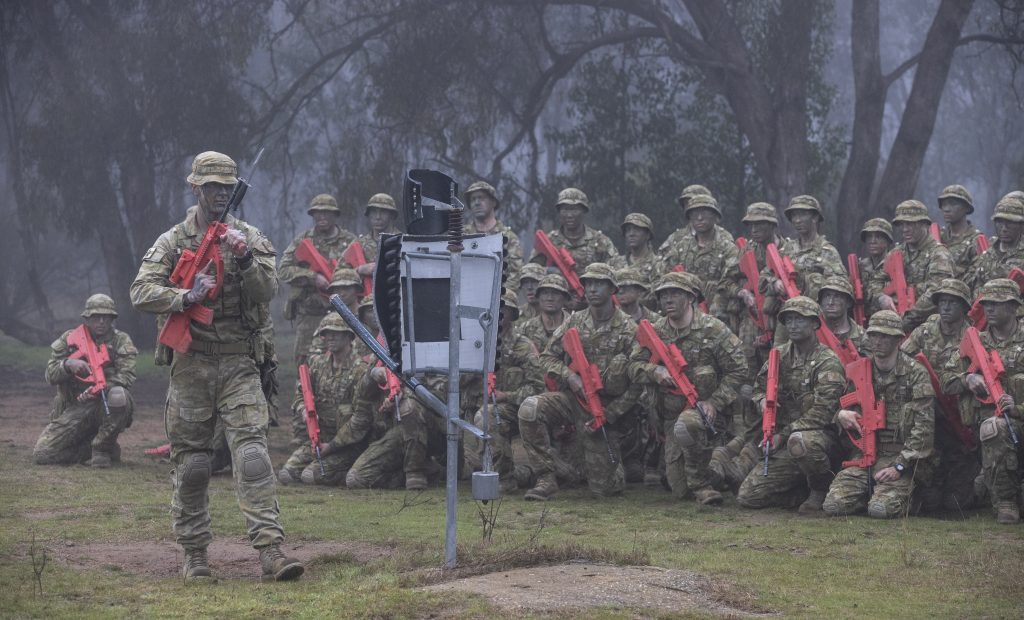
As it prepares Australia to defend itself in a contested region, the ADF has put the call out to young people to join—to achieve its goals, it needs to recruit 18,500 more people of serving age by 2040.
Young people in Australia can seem an enigma to marketing minds and the labour market is no exception. Specifically, recruiters are neglecting a rapidly growing phenomenon affecting many Australian young people—mental illness.
Not only are distressed young people less likely to do something as difficult (if rewarding) as joining the armed forces than if they were feeling well, but they are also actively barred from exploring this option. According to Defence’s supplementary submission to a Senate Standing Committee on suicide prevention among veterans—a ‘current psychiatric condition’, defined by diagnosis in the last 12 months, is currently an exclusion condition in a defence force recruiting process.
But here’s the issue, 4.2 million people meet this criteria, according to the National Study of Health and Wellbeing conducted by the Australian Bureau of Statistics. And with the ADF hoping to get more women into uniform, it’s especially concerning that 24% of females surveyed in that study met this exclusion criteria.
And even this understates Defence Force Recruiting’s woes. These numbers are even worse among its biggest target market—young people.
Among those aged 16-24 years, almost two in five (39.6%) had an ‘active’ mental health diagnosis in 2020-21.
For females in this age group, that number soared again, to almost half (46.6%). As it stands, this exclusion criterion makes more than a third of young Australians unable to serve in the ADF.
Defence Force Recruiting likes to paint life in the army as exciting and one of a kind. Announcing their recent campaign, ‘Live a story worth telling’, a leader described Defence personnel’s lived experiences as ‘filled with laughter, joy, sometimes tears and excitement.’
While this is certainly true for some members, and no two experiences of any career are the same, it only tells one side of the story. Defence needs to be more transparent about the psychological difficulties members can face during and after their careers.
The 2021 National Health Survey shows that Department of Veterans’ Affairs clients are twice as likely as non-clients to experience an anxiety disorder. Suicide rates for ex-serving members of the armed forces were 24% higher for ex- males, and 102%, or roughly twice as many deaths per 100,000 people, for ex-serving females.
The ADF’s own mental health prevalence report into health and wellbeing transition estimated that 46% of transitioned ADF members had experienced mental illness in the previous 12 months in 2015.
To address this, the ADF is responding with several initiatives designed to identify changes in the mental health of members. However, these reports focus primarily on prevention, rather than management and treatment. They contain extensive discussion of ‘building resilience’.
In 2019, the ADF released a report that said, ‘Lower levels of resilience, as measured by the Connor-Davidson Resilience Scale (CD-RISC), have been linked to attrition from the military and being diagnosed with a mental health condition in the early years of military service’.
Whether resilience is a useful way of viewing mental health prevention or not, identifying those who are diagnosed with a mental health condition as ‘lacking resilience’ is absolutely out of touch with the approach of Australian young people. Indeed, it’s at odds with the approach of many mental health professionals.
Even if preventing mental health issues is possible through ‘building resilience’, focusing heavily on prevention without addressing treatment can’t work at scale, assuming current trends among young people will hold. The ADF faces a massive mental health challenge.
With young people entering the ADF every year, Defence must address the growing risks of those with psychological distress entering service. It needs to shift its approach and better help members manage and be willing to help treat low-risk mental illnesses among members, not only prevent them. It can’t only rely on resilience, awareness-building, and exclusion from service. It’s also worth noting that the ADF’s own reports show that exclusion from service itself is a high-risk factor among members that have issues later in life.
It’s far too late to prevent the mental health epidemic tearing through the Australian people from reaching the ADF. As Defence builds its workforce in coming years, it will need to deal with members being mentally unwell—often temporarily, when well-treated—at a growing rate.
To meet its ambitious targets, Defence needs a recruiting strategy intelligently targeted at young Australians. This means going beyond platitudes about resilience and expanding the ongoing treatment of low-risk mental health disorders in the ADF. This means acknowledging that a large portion of potential candidates, perhaps eventually most, have faced some kind of mental health issue. Like it or not, some people who need treatment are going to end up in service.
There was a time when mild asthma excluded a candidate for service. Eventually, the ADF came to realise that low-risk cases could be managed, introduced a system for members who suffer from it, and relaxed this requirement.
In a strategic environment that demands a surge of participation from young Australians to make their country safe, having sought help for mental health shouldn’t be seen as any different.

